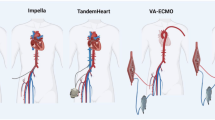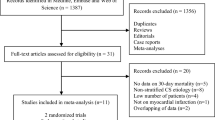Abstract
Recently, there has been a growing interest in the concept of complex and high-risk intervention in indicated patients (CHIP). In our previous studies, we defined the three CHIP components (complex PCI, patient factors, and complicated heart disease), and introduced a novel stratification based on patient factors and/or complicated heart disease. We divided patients undergoing complex PCI into the definite CHIP, the possible CHIP, and the non-CHIP groups. Definite CHIP was defined as complex PCI for patients with both patient factors and complicated heart disease, and possible CHIP was defined as complex PCI for patients with either patient factors or complicated heart disease. Of note, even if a patient has both patients’ factors and complicated heart disease, non-complex PCI is not a CHIP-PCI. In this review article, we discussed the determinants of complications in CHIP-PCI, long-term outcomes after CHIP-PCI, mechanical circulatory support devices for CHIP-PCI, and the goal of CHIP-PCI. Although CHIP-PCI attracts rising attention in contemporary PCI, clinical studies that investigate the clinical implications of CHIP-PCI are still sparse. Further studies are warranted to optimize CHIP-PCI.


Similar content being viewed by others
Data availability
This review article does not include original data.
References
Task Force M, Montalescot G, Sechtem U, Achenbach S, Andreotti F, Arden C, et al. 2013 ESC guidelines on the management of stable coronary artery disease: the Task Force on the management of stable coronary artery disease of the European Society of Cardiology. Eur Heart J. 2013;34:2949–3003.
Virani SS, Alonso A, Aparicio HJ, Benjamin EJ, Bittencourt MS, Callaway CW, et al. Heart Disease and Stroke Statistics-2021 Update: a Report From the American Heart Association. Circulation. 2021;143:e254–743.
Ando H, Yamaji K, Kohsaka S, Ishii H, Wada H, Yamada S, et al. Japanese Nationwide PCI (J-PCI) Registry Annual Report 2019: patient demographics and in-hospital outcomes. Cardiovasc Interv Ther. 2022;37:243–7.
Bauersachs R, Zeymer U, Briere JB, Marre C, Bowrin K, Huelsebeck M. Burden of coronary artery disease and peripheral artery disease: a literature review. Cardiovasc Ther. 2019;2019:8295054.
Jensen L, Monnat SM, Green JJ, Hunter LM, Sliwinski MJ. Rural population health and aging: toward a multilevel and multidimensional research agenda for the 2020s. Am J Public Health. 2020;110:1328–31.
Rodriguez A, Boullon F, Perez-Balino N, Paviotti C, Liprandi MI, Palacios IF. Argentine randomized trial of percutaneous transluminal coronary angioplasty versus coronary artery bypass surgery in multivessel disease (ERACI): in-hospital results and 1-year follow-up. ERACI Group. J Am Coll Cardiol. 1993;22:1060–7.
King SB 3rd, Lembo NJ, Weintraub WS, Kosinski AS, Barnhart HX, Kutner MH, et al. A randomized trial comparing coronary angioplasty with coronary bypass surgery. Emory Angioplasty versus Surgery Trial (EAST). N Engl J Med. 1994;331:1044–50.
Bae S, Kim Y, Gogas BD, Kim MC, Sim DS, Hong YJ, et al. Efficacy and safety of drug-eluting stents in elderly patients: a meta-analysis of randomized trials. Cardiol J. 2021;28:223–34.
McKavanagh P, Zawadowski G, Ahmed N, Kutryk M. The evolution of coronary stents. Expert Rev Cardiovasc Ther. 2018;16:219–28.
Sakakura K, Ito Y, Shibata Y, Okamura A, Kashima Y, Nakamura S, et al. Clinical expert consensus document on rotational atherectomy from the Japanese association of cardiovascular intervention and therapeutics. Cardiovasc Interv Ther. 2021;36:1–18.
Saito Y, Kobayashi Y. Contemporary coronary drug-eluting and coated stents: a mini-review. Cardiovasc Interv Ther. 2021;36:20–2.
Sakamoto K, Sato R, Tabata N, Ishii M, Yamashita T, Nagamatsu S, et al. Temporal trends in coronary intervention strategies and the impact on one-year clinical events: data from a Japanese multi-center real-world cohort study. Cardiovasc Interv Ther. 2022;37:66–77.
Taguchi Y, Kubo S, Ikuta A, Osakada K, Takamatsu M, Takahashi K, et al. Percutaneous coronary intervention for left main coronary artery malperfusion in acute type A aortic dissection. Cardiovasc Interv Ther. 2022;37:333–42.
Tsujimura T, Ishihara T, Takahashi K, Iida O, Hata Y, Toyoshima T, et al. Cutting balloons versus conventional balloons for treating patients with coronary artery disease presenting with moderate-to-severely calcified lesions: impact on post-interventional minimum stent area. Cardiovasc Interv Ther. 2022. https://doi.org/10.1007/s12928-022-00860-4.
Serruys PW, Morice MC, Kappetein AP, Colombo A, Holmes DR, Mack MJ, et al. Percutaneous coronary intervention versus coronary-artery bypass grafting for severe coronary artery disease. N Engl J Med. 2009;360:961–72.
Farkouh ME, Domanski M, Sleeper LA, Siami FS, Dangas G, Mack M, et al. Strategies for multivessel revascularization in patients with diabetes. N Engl J Med. 2012;367:2375–84.
Kirtane AJ, Doshi D, Leon MB, Lasala JM, Ohman EM, O’Neill WW, et al. Treatment of higher-risk patients with an indication for revascularization: evolution within the field of contemporary percutaneous coronary intervention. Circulation. 2016;134:422–31.
Choi JH, Kim SH, Kim BW, Bong U, Sohn CB. Successful management of iatrogenic arterial pseudoaneurysm caused by rotational atherectomy. Cardiovasc Interv Ther. 2022;37:391–2.
Endo H, Dohi T, Miyauchi K, Takahashi D, Funamizu T, Shitara J, et al. Clinical impact of complex percutaneous coronary intervention in patients with coronary artery disease. Cardiovasc Interv Ther. 2020;35:234–41.
Sadamatsu K, Okutsu M, Sumitsuji S, Kawasaki T, Nakamura S, Fukumoto Y, et al. Practical utilization of cardiac computed tomography for the success in complex coronary intervention. Cardiovasc Interv Ther. 2021;36:178–89.
Kinnaird T, Gallagher S, Spratt JC, Ludman P, de Belder M, Copt S, et al. Complex high-risk and indicated percutaneous coronary intervention for stable angina: does operator volume influence patient outcome? Am Heart J. 2020;222:15–25.
Araco M, Quagliana A, Pedrazzini G, Valgimigli M. A new iteration for the single-access large-bore technique during Impella supported complex and high-risk coronary intervention: a case report. Eur Heart J Case Rep. 2021;5:ytab428.
Achim A, Marc M, Ruzsa Z. Surgical turned-downed CHIP cases-can PCI save the day? Front Cardiovasc Med. 2022;9: 872398.
Shamkhani W, Rashid M, Mamas M. Complex, high-risk percutaneous coronary intervention types, trends, and in-hospital outcomes among different age groups: an insight from a national registry. Catheter Cardiovasc Interv. 2022;100:711–20.
Shamkhani W, Kinnaird T, Ludman P, Rashid M, Mamas MA. Sex differences in high-risk but indicated coronary interventions (CHiP): National report from British Cardiovascular Intervention Society Registry. Catheter Cardiovasc Interv. 2022;99:447–56.
Shamkhani W, Kinnaird T, Wijeysundera HC, Ludman P, Rashid M, Mamas MA. Ethnicity in complex high-risk but indicated percutaneous coronary intervention types and outcomes. Am J Cardiol. 2022;175:26–37.
Fujimoto Y, Sakakura K, Jinnouchi H, Taniguchi Y, Tsukui T, Watanabe Y, et al. Comparison of outcomes of elective percutaneous coronary intervention between complex and high-risk intervention in indicated patients (CHIP) versus non-CHIP. J Atheroscler Thromb. 2022. https://doi.org/10.5551/jat.63956.
Fujimoto Y, Sakakura K, Jinnouchi H, Taniguchi Y, Tsukui T, Watanabe Y, et al. Comparison of long-term clinical outcomes of elective percutaneous coronary intervention between complex and high-risk intervention in indicated patients (CHIP) versus non-CHIP. Am J Cardiol. 2023;194:1–8.
Protty M, Sharp ASP, Gallagher S, Farooq V, Spratt JC, Ludman P, et al. Defining percutaneous coronary intervention complexity and risk: an analysis of the United Kingdom BCIS Database 2006–2016. JACC Cardiovasc Interv. 2022;15:39–49.
Brener SJ, Cunn GJ, Desai PH, Faroqui M, Ha LD, Handa G, et al. A novel risk score to predict one-year mortality in patients undergoing complex high-risk indicated percutaneous coronary intervention (CHIP-PCI). J Invasive Cardiol. 2021;33:E253–8.
Burzotta F, Russo G, Ribichini F, Piccoli A, D’Amario D, Paraggio L, et al. Long-term outcomes of extent of revascularization in complex high risk and indicated patients undergoing Impella-protected percutaneous coronary intervention: report from the Roma-verona registry. J Interv Cardiol. 2019;2019:5243913.
Curtis JP, Rathore SS, Wang Y, Chen J, Nallamothu BK, Krumholz HM. Use and effectiveness of intra-aortic balloon pumps among patients undergoing high risk percutaneous coronary intervention: insights from the National Cardiovascular Data Registry. Circ Cardiovasc Qual Outcomes. 2012;5:21–30.
Perera D, Stables R, Thomas M, Booth J, Pitt M, Blackman D, et al. Elective intra-aortic balloon counterpulsation during high-risk percutaneous coronary intervention: a randomized controlled trial. JAMA. 2010;304:867–74.
Briguori C, Airoldi F, Chieffo A, Montorfano M, Carlino M, Sangiorgi GM, et al. Elective versus provisional intraaortic balloon pumping in unprotected left main stenting. Am Heart J. 2006;152:565–72.
Zein R, Patel C, Mercado-Alamo A, Schreiber T, Kaki A. A review of the Impella devices. Interv Cardiol. 2022;17: e05.
Chieffo A, Burzotta F, Pappalardo F, Briguori C, Garbo R, Masiero G, et al. Clinical expert consensus document on the use of percutaneous left ventricular assist support devices during complex high-risk indicated PCI: Italian Society of Interventional Cardiology Working Group Endorsed by Spanish and Portuguese Interventional Cardiology Societies. Int J Cardiol. 2019;293:84–90.
O’Neill WW, Kleiman NS, Moses J, Henriques JP, Dixon S, Massaro J, et al. A prospective, randomized clinical trial of hemodynamic support with Impella 2.5 versus intra-aortic balloon pump in patients undergoing high-risk percutaneous coronary intervention: the PROTECT II study. Circulation. 2012;126:1717–27.
Baumann S, Werner N, Al-Rashid F, Schafer A, Bauer T, Sotoudeh R, et al. Six months follow-up of protected high-risk percutaneous coronary intervention with the microaxial Impella pump: results from the German Impella registry. Coron Artery Dis. 2020;31:237–42.
Schreiber T, Wah Htun W, Blank N, Telila T, Mercado N, Briasoulis A, et al. Real-world supported unprotected left main percutaneous coronary intervention with Impella device; data from the USpella registry. Catheter Cardiovasc Interv. 2017;90:576–81.
van den Buijs DMF, van den Brink FS, Wilgenhof A, Zivelonghi C, Verouden N, Knaapen P, et al. Complex high-risk indicated percutaneous coronary intervention with prophylactic use of the Impella CP ventricular assist device. J Invasive Cardiol. 2022;34:E665–71.
Doesch C, Suselbeck T, Leweling H, Fluechter S, Haghi D, Schoenberg SO, et al. Bioimpedance analysis parameters and epicardial adipose tissue assessed by cardiac magnetic resonance imaging in patients with heart failure. Obesity (Silver Spring). 2010;18:2326–32.
Amin AP, Spertus JA, Curtis JP, Desai N, Masoudi FA, Bach RG, et al. The evolving landscape of Impella use in the united states among patients undergoing percutaneous coronary intervention with mechanical circulatory support. Circulation. 2020;141:273–84.
Schurtz G, Rousse N, Saura O, Balmette V, Vincent F, Lamblin N, et al. IMPELLA((R)) or extracorporeal membrane oxygenation for left ventricular dominant refractory cardiogenic shock. J Clin Med. 2021. https://doi.org/10.3390/jcm10040759.
Takura T, Ono M, Ako J, Ikari Y, Toda K, Sawa Y, et al. Clinical and economic evaluation of Impella treatment for fulminant myocarditis—a preliminary retrospective cohort study in Japan. Circ J. 2022. https://doi.org/10.1253/circj.CJ-22-0439.
Takahashi K, Kubo S, Ikuta A, Osakada K, Takamatsu M, Taguchi Y, et al. Incidence, predictors, and clinical outcomes of mechanical circulatory support-related complications in patients with cardiogenic shock. J Cardiol. 2022;79:163–9.
Shaukat A, Hryniewicz-Czeneszew K, Sun B, Mudy K, Wilson K, Tajti P, et al. Outcomes of extracorporeal membrane oxygenation support for complex high-risk elective percutaneous coronary interventions: a single-center experience and review of the literature. J Invasive Cardiol. 2018;30:456–60.
Vainer J, van Ommen V, Maessen J, Geskes G, Lamerichs L, Waltenberger J. Elective high-risk percutaneous coronary interventions supported by extracorporeal life support. Am J Cardiol. 2007;99:771–3.
Shammas NW, Roberts S, Early G. Extracorporeal membrane oxygenation for unprotected left main stenting in a patient with totally occluded right coronary artery and severe left ventricular dysfunction. J Invasive Cardiol. 2002;14:756–9.
Lawton JS, Tamis-Holland JE, Bangalore S, Bates ER, Beckie TM, Bischoff JM, et al. 2021 ACC/AHA/SCAI Guideline for Coronary Artery Revascularization: Executive Summary: a Report of the American College of Cardiology/American Heart Association Joint Committee on Clinical Practice Guidelines. Circulation. 2022;145:e4–17.
Author information
Authors and Affiliations
Corresponding author
Ethics declarations
Conflict of interest
Dr. Sakakura has received speaking honoraria from Abbott Vascular, Abiomed, Boston Scientific, Medtronic Cardiovascular, Terumo, OrbusNeich, Japan Lifeline, Kaneka, and NIPRO.
Additional information
Publisher's Note
Springer Nature remains neutral with regard to jurisdictional claims in published maps and institutional affiliations.
Rights and permissions
Springer Nature or its licensor (e.g. a society or other partner) holds exclusive rights to this article under a publishing agreement with the author(s) or other rightsholder(s); author self-archiving of the accepted manuscript version of this article is solely governed by the terms of such publishing agreement and applicable law.
About this article
Cite this article
Fujimoto, Y., Sakakura, K. & Fujita, H. Complex and high-risk intervention in indicated patients (CHIP) in contemporary clinical practice. Cardiovasc Interv and Ther 38, 269–274 (2023). https://doi.org/10.1007/s12928-023-00930-1
Received:
Accepted:
Published:
Issue Date:
DOI: https://doi.org/10.1007/s12928-023-00930-1




